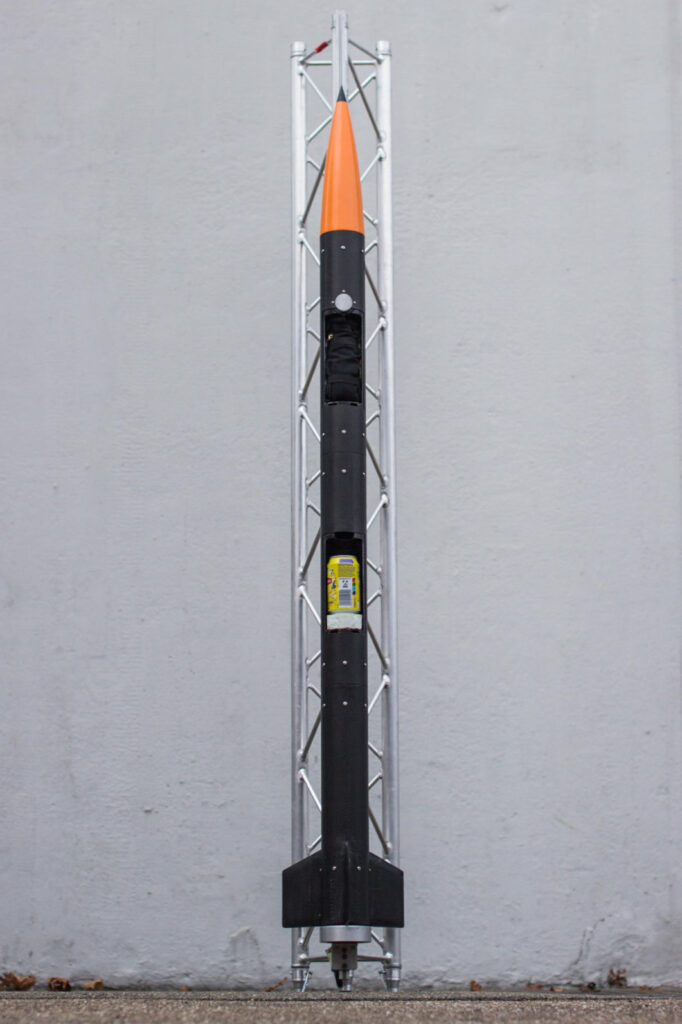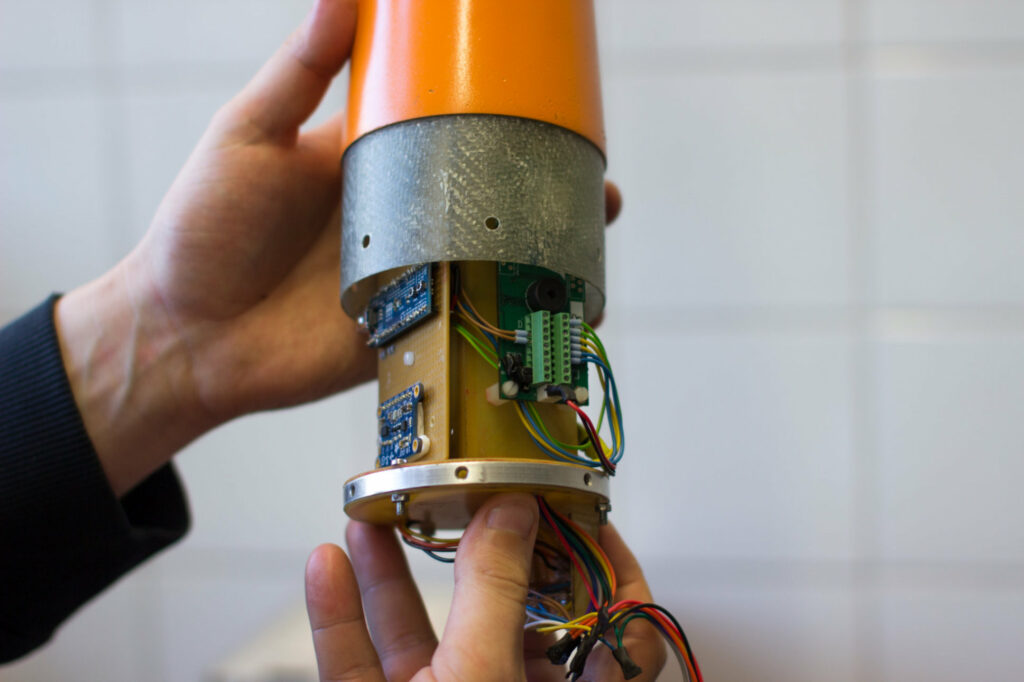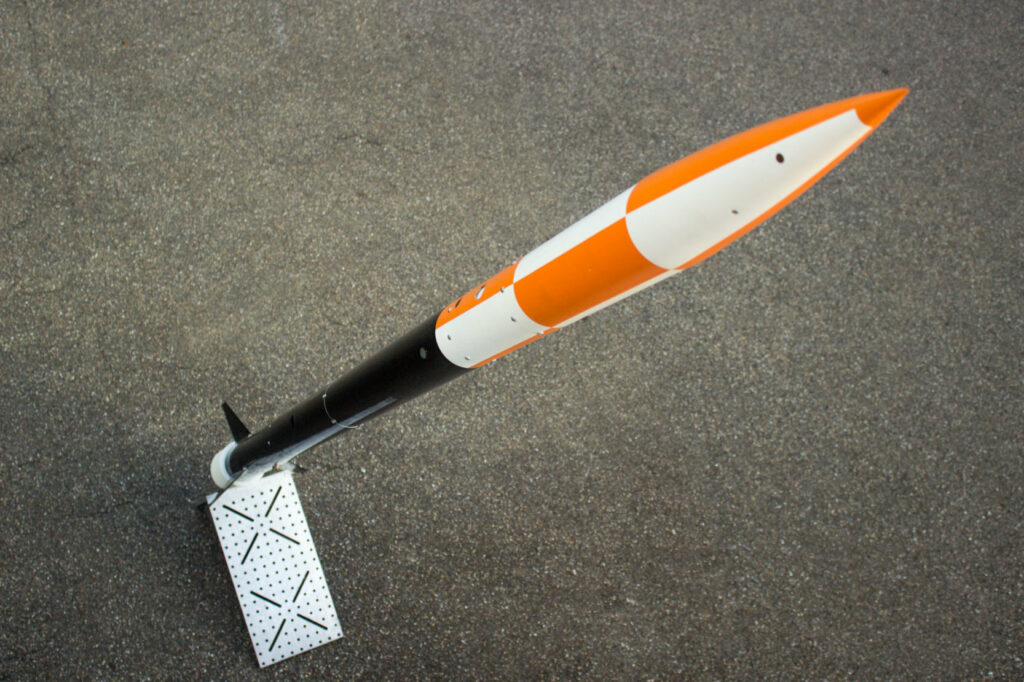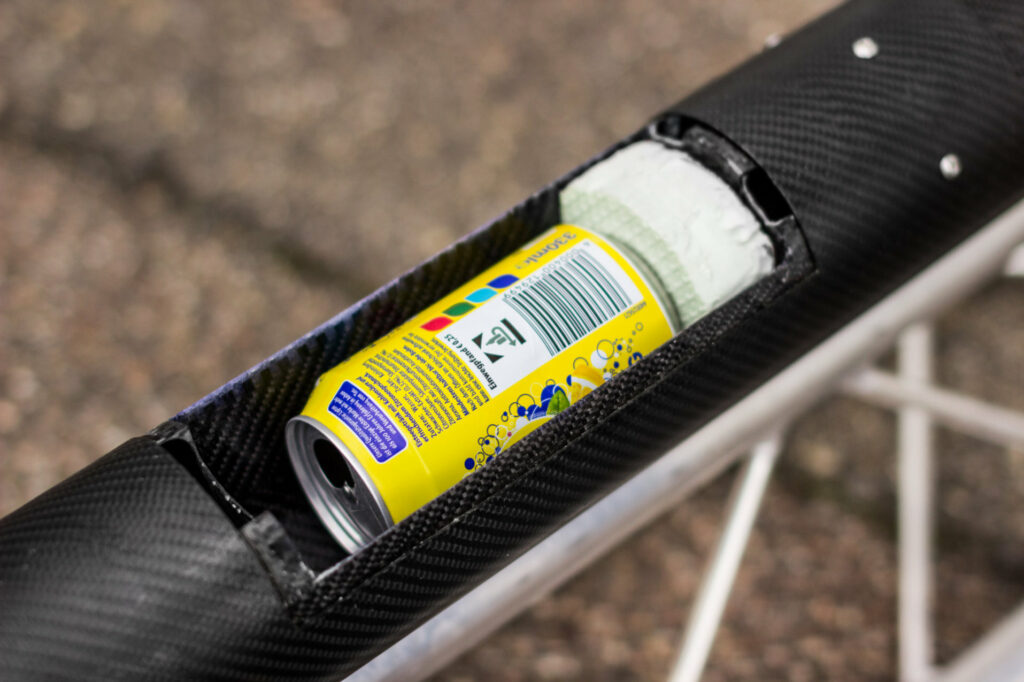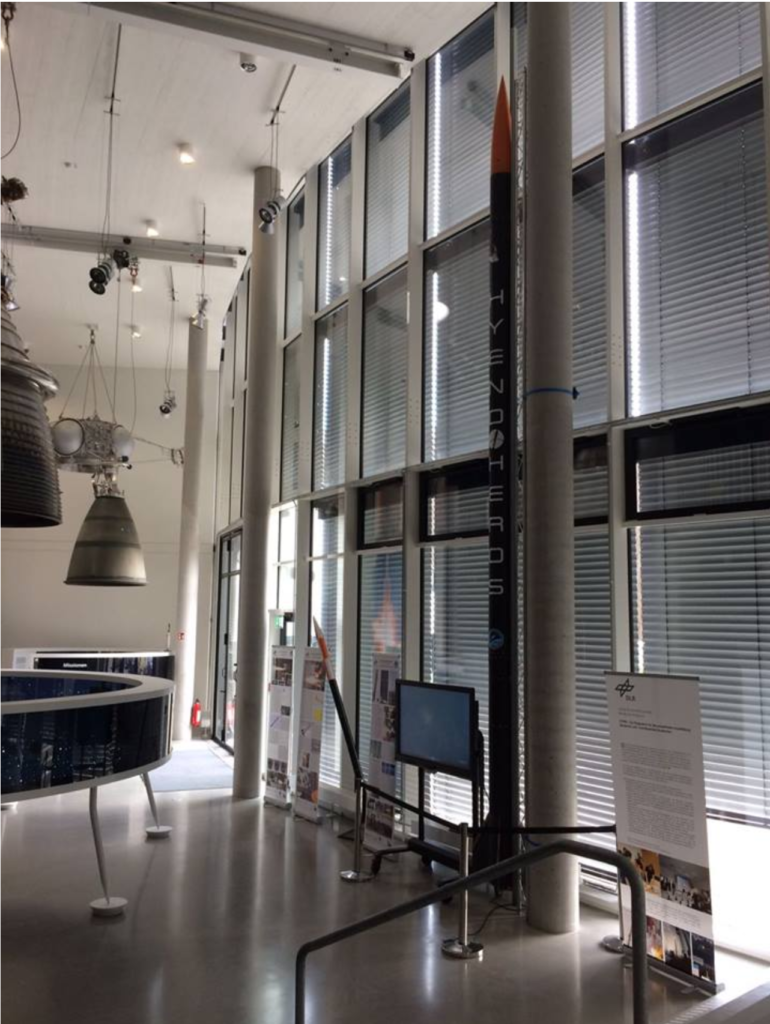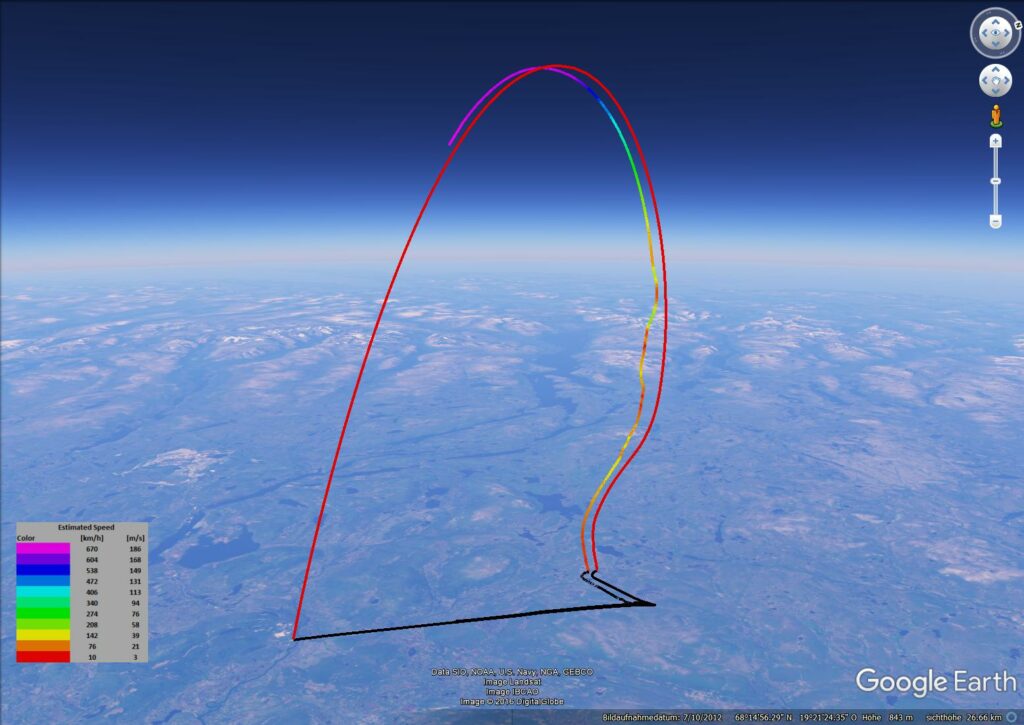CanSat Launcher Progress
Recently, great progress has been made in the development and production of the electronics subsystem. By now there’s a complete hardware package made of an Arduino, a TeleMega and the primary batteries which are mounted on a platform in the nose cone. The software and hardware will be tested soon. The testing of the electronics involves drone flights and a vacuum chamber to make sure the software will trigger the deployment of the CanSat and the parachutes after reaching the apogee.
Lately the fins were attached to the lower end of the rocket. To lower production and development time two identical compartments were produced. One will be used for the CanSat, while the other will contain the main parachute.
Shortly after reaching the apogee, the software will trigger a cable cutter to cut the string used to keep the door of the CanSat compartment closed to the rocket. By releasing the compartment door the CanSat will be ejected immediately via a block of foam material. An ejection mechanism based on foam sounds like a simple solution, but has two main advantages: During the ascent the CanSat is kept in its position in the compartment and the ejection doesn’t need an extra trigger by the software.
